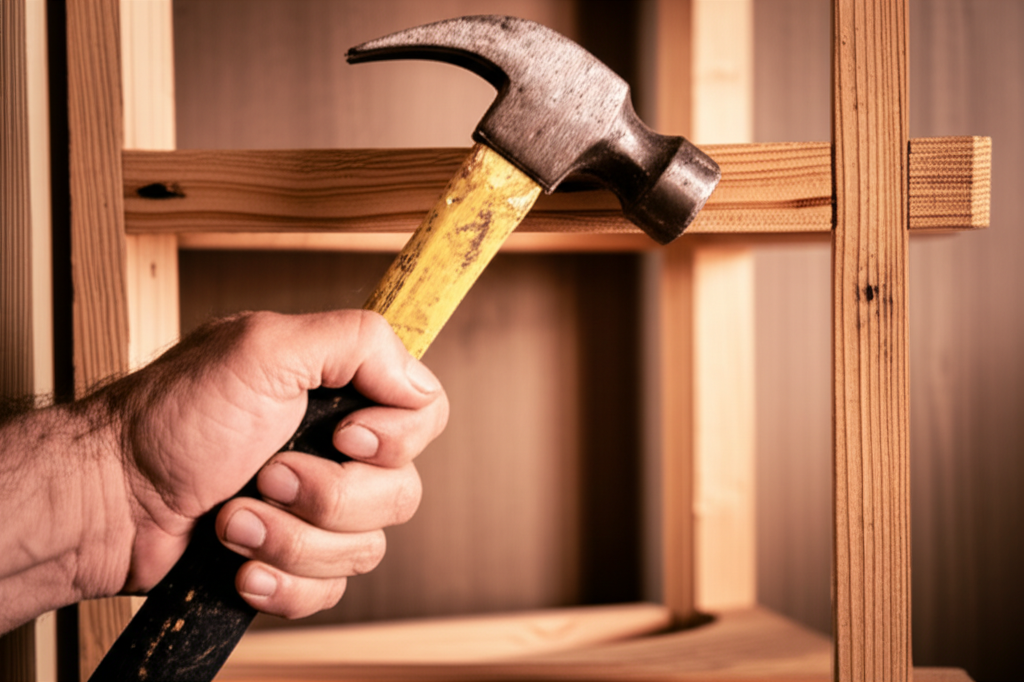Feeling overwhelmed by the sheer number of tools recommended for DIY projects? Tired of wasting money on gadgets you'll never use? If you're over 40 and ready to embrace the satisfaction of building and fixing things yourself, you don't need a massive workshop. You just need the right tools.
What if I told you that you could tackle 90% of home improvement projects with just five essential tools? It’s true. This guide cuts through the noise, focusing on the core implements that will empower you to build, repair, and create with confidence. Let's ditch the unnecessary clutter and get down to the tools that truly matter.
What are the 5 most essential tools for DIY projects?
Forget the endless lists. These are the five tools every post-40 DIYer needs to start building:
- Claw Hammer: The cornerstone of any toolkit.
- Tape Measure: Accuracy is key to success.
- Utility Knife: For precision cuts and detail work.
- Level: Ensuring stability and professional results.
- Power Drill/Driver: The ultimate time-saver and versatile tool.
Let’s dive deeper into why these tools are essential and how to choose the best ones for your needs.
Why is a claw hammer essential for DIY projects?
The claw hammer isn't just for driving nails; it's a versatile tool for demolition, shaping wood, and even light metalwork.
What should I look for in a claw hammer?
- Weight: A 20 oz. hammer is a good balance between power and maneuverability.
- Handle Material: Hickory handles absorb vibration, reducing strain. Steel or fiberglass handles offer greater durability. Choose what feels best in your hand.
- Head Type: Avoid "waffle" heads (common in construction) which leave marks. Opt for a smooth, slightly rounded head for woodworking.
How important is an accurate tape measure for DIY?
Imagine building a bookshelf only to discover it's too wide for the space! An accurate tape measure is non-negotiable for successful DIY projects.
What makes a tape measure accurate?
- Length: A 25-foot retractable tape measure is ideal for most home projects.
- Hook Stability: Ensure the metal hook at the end is firmly attached. A loose hook can lead to significant measurement errors.
- Readability: Choose a tape measure with clear, easy-to-read markings.
What makes a utility knife indispensable for DIY tasks?
The utility knife is your go-to for precision cuts, scoring, and detail work. It's far more versatile than a standard knife or scissors.
What are the key features of a good utility knife?
- Retractable Blade: Safety first! A retractable blade prevents accidental cuts.
- Disposable Blades: Easy blade changes ensure a consistently sharp cutting edge.
- Ergonomic Grip: Comfort is crucial for extended use.
Why is a level crucial for achieving professional-looking results?
A crooked shelf or picture frame screams "amateur." A level ensures your projects are stable, functional, and visually appealing.
What types of levels are most useful for DIY?
- Torpedo Level (8-inch): Perfect for small spaces and quick checks.
- 48-inch Level: Ideal for larger projects like installing shelves or hanging doors.
- Digital Level (Optional): Offers precise angle measurements for advanced projects.
Why is a power drill/driver the ultimate DIY tool?
From assembling furniture to driving screws and drilling holes, a power drill/driver is the workhorse of any DIY toolkit. It dramatically speeds up projects and provides consistent results.
What should I consider when buying a power drill/driver?
- Corded vs. Cordless: Cordless drills offer portability, while corded drills provide consistent power for demanding tasks.
- Chuck Size: A 3/8-inch chuck is sufficient for most DIY projects, but a 1/2-inch chuck offers greater versatility for larger drill bits.
- Variable Speed: Essential for controlling the drilling speed based on the material.
- Torque: Higher torque is needed for driving screws into dense materials.
Frequently Asked Questions
What about safety gear? Is that really essential?
Absolutely! Safety glasses and work gloves are non-negotiable. Hearing protection is also recommended when using power tools.
What about specialized tools like saws or sanders?
While specialized tools can be helpful, they aren't essential for getting started. You can always add them to your toolkit as your skills and project scope expand.
Where should I store my tools?
A simple toolbox or pegboard system is sufficient for storing these five essential tools. The key is to keep them organized and easily accessible.
Empower Yourself to Build
With just these five essential tools – the claw hammer, tape measure, utility knife, level, and power drill/driver – you can confidently tackle a wide range of DIY projects. Don't let the overwhelming tool lists intimidate you. Focus on mastering these core implements, and you'll be amazed at what you can build and repair.
Ready to start your first project? Pick one small task, like hanging a picture or fixing a loose cabinet door. With the right tools and a little practice, you'll be well on your way to becoming a confident and capable DIYer. Now go build something!

